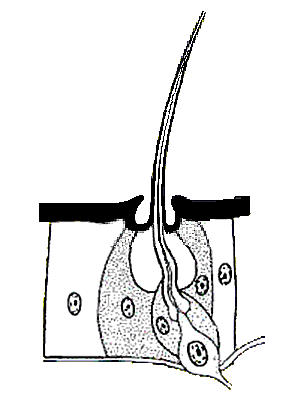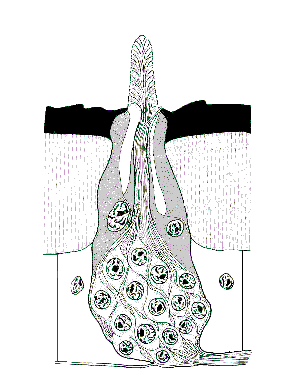Chemoreceptors
Insects have the ability to sense various chemical substances in their environment. When these chemicals are present in gaseous form (at relatively low concentrations), they may be detected as odors (smells) by olfactory receptors. When they are in solid or liquid form (usually at higher concentrations) they are perceived as tastes by gustatory receptors. In general, the sense of taste involves direct contact with a substrate (contact chemoreception) whereas olfaction usually implies detection of compounds in gaseous or airborne form (remote chemoreception).



